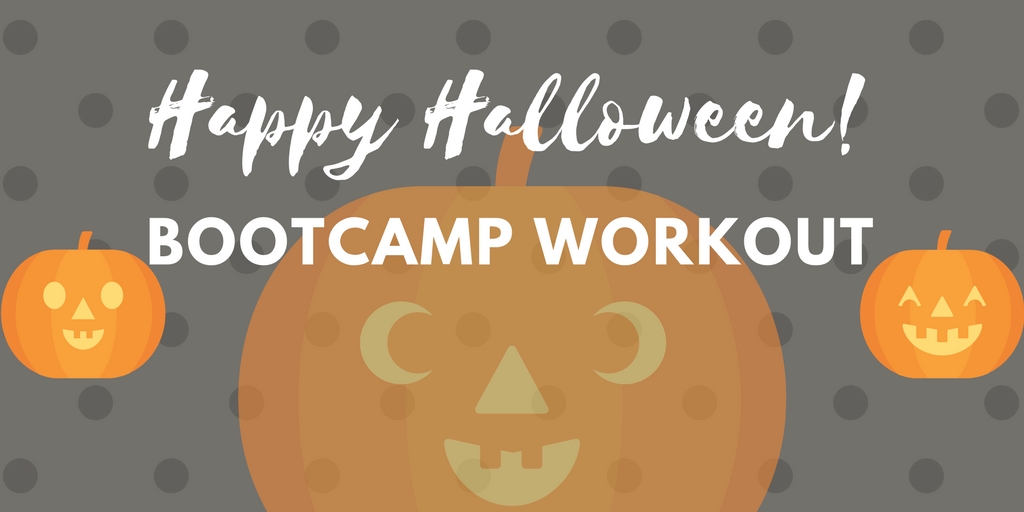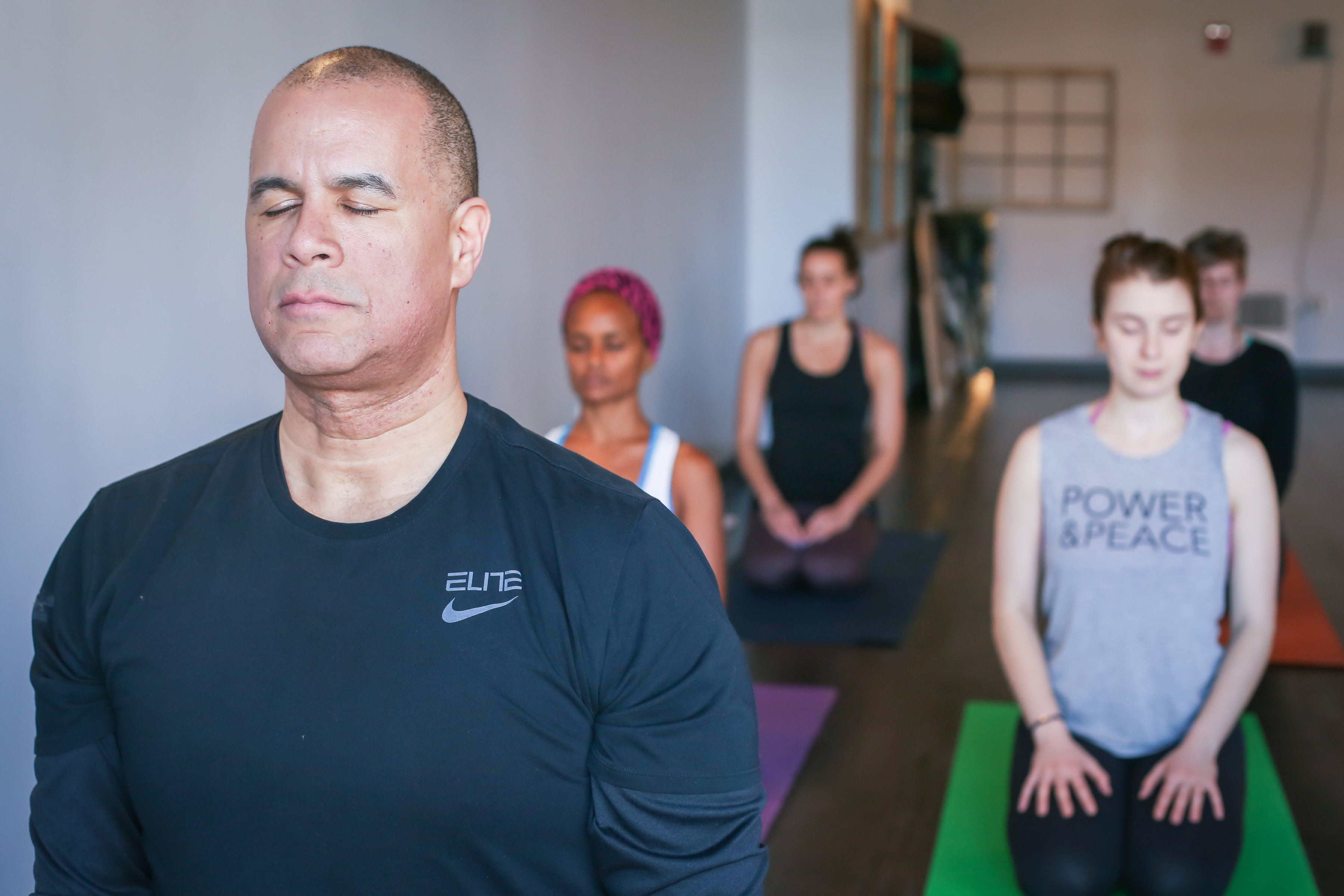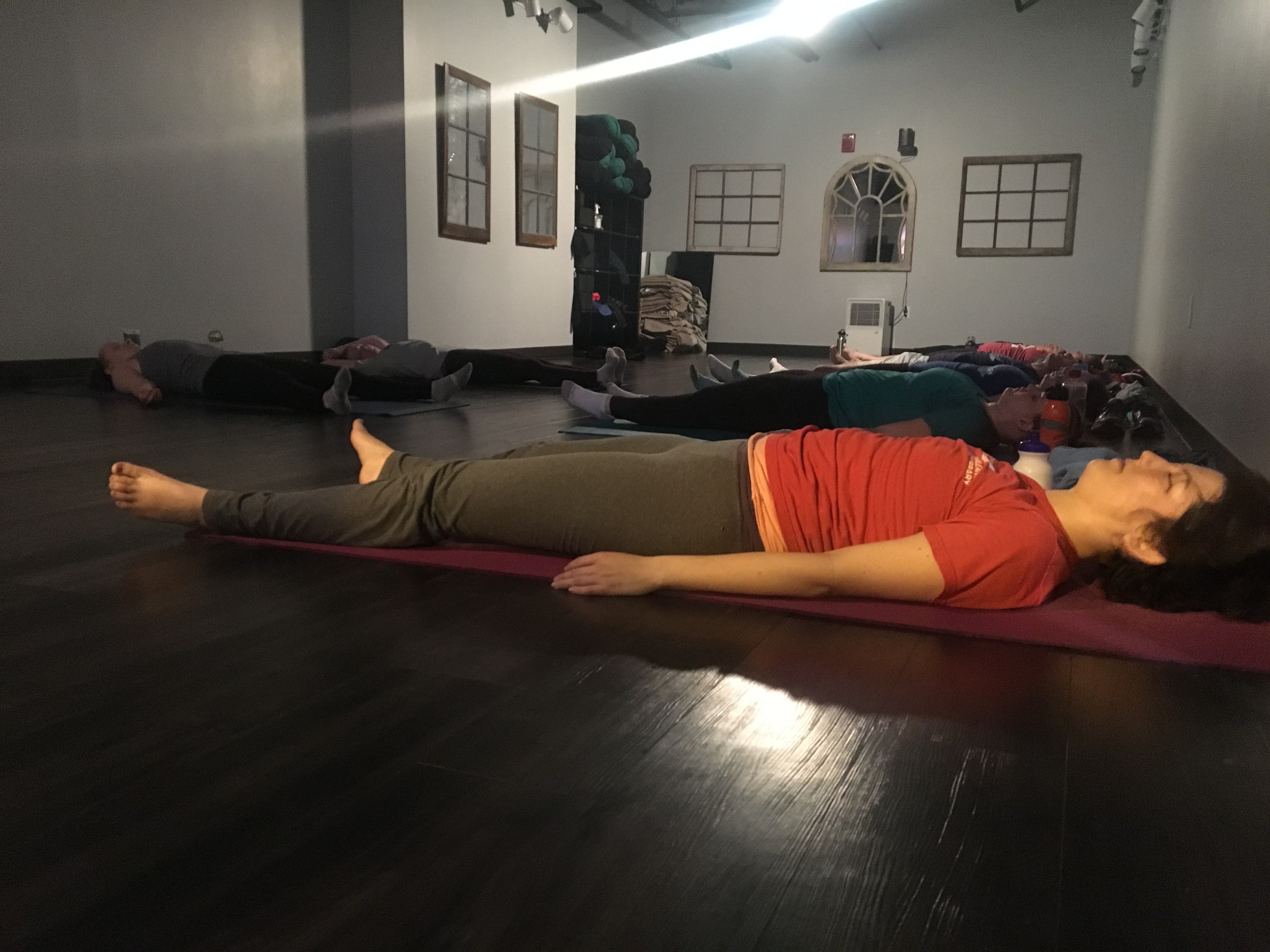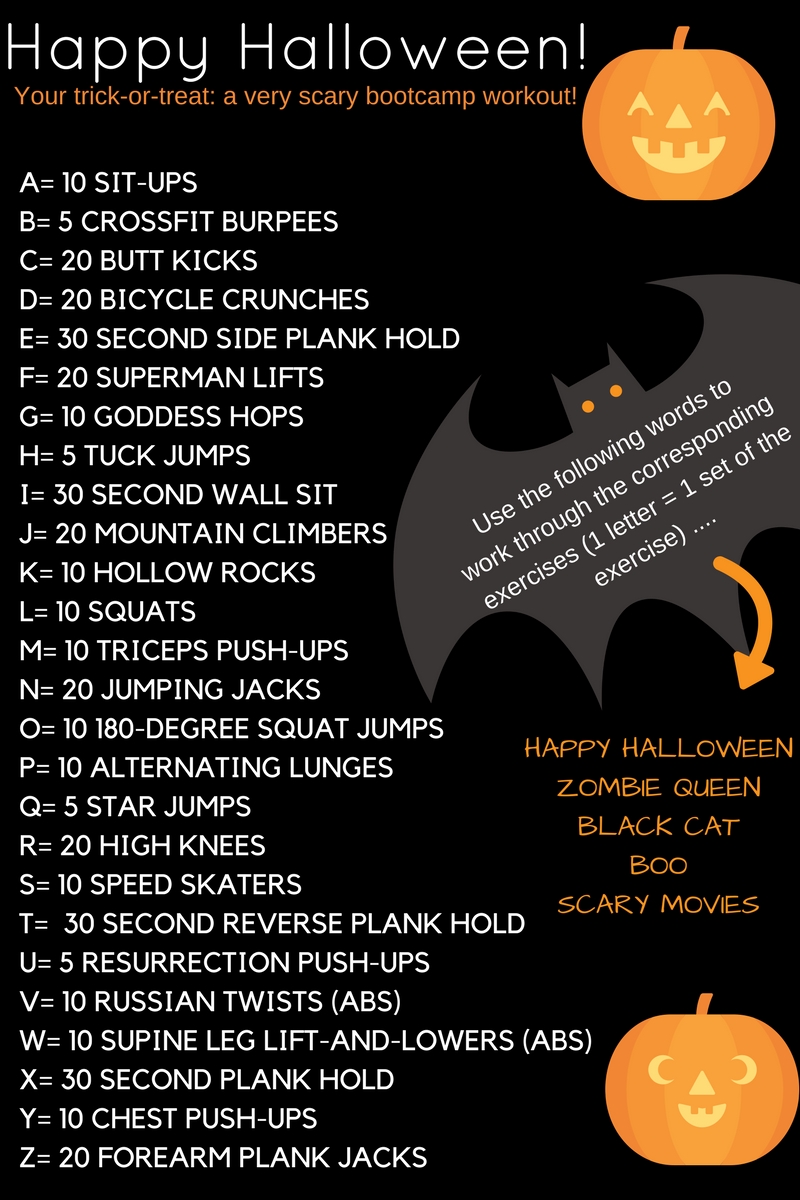
BIG Announcement: Coming Fall of 2017 to Takoma….Yoga Heights #2!
As Co-Owner of Yoga Heights, I just had to share!! We are so excited for this next big step and can’t wait to bring our community-oriented yoga and fitness classes to a new neighborhood in the District. Stay tuned for photos of the build-out and details on our grand opening slated for this fall.
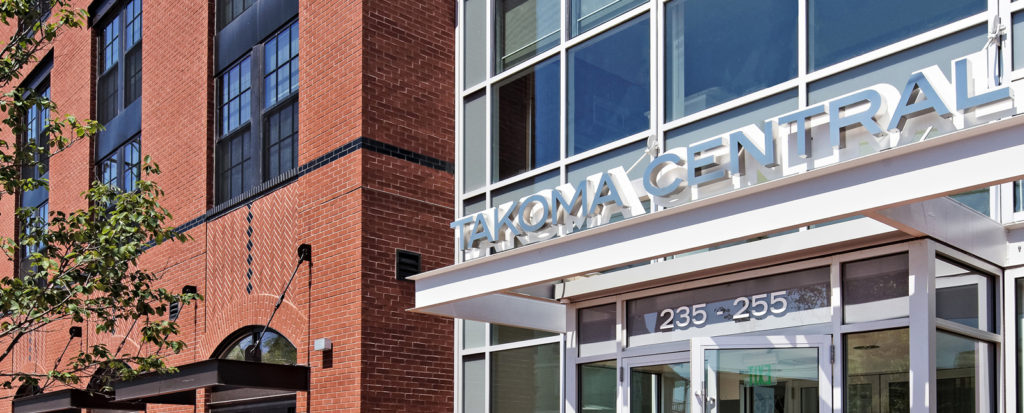
April 27, 2017
WASHINGTON, D.C. – Yoga Heights, a yoga studio at 3506 Georgia Ave. NW., announced today that they are opening their second location this fall in the Takoma Central Apartment building at 235 Carroll Ave. NW, Washington, D.C. Yoga Heights is a community oriented studio that offers classes for every body, at every level and every budget.
“The love and support of the Yoga Heights community has been overwhelming for the past three years,” said Jess Pierno, owner. “Our students’ enthusiasm for the studio, our teachers, events and community, has made Yoga Heights an incredibly special yoga studio. It was never in the plans to open additional locations, but due to repeated requests to offer more classes, community events and YHDC good vibes, we were inspired to expand our studio!”
Yoga Heights will continue to offer all levels vinyasa and power yoga, beginners classes, Rocket yoga, restorative and Yin yoga, prenatal yoga, bootcamps, Pilates, yoga teacher training and community events at both locations.
Yoga Heights Takoma is just steps from the Takoma metro station on the red line and is on bus lines 52, 53, 54, 62, 63, F1, F2 and K2.
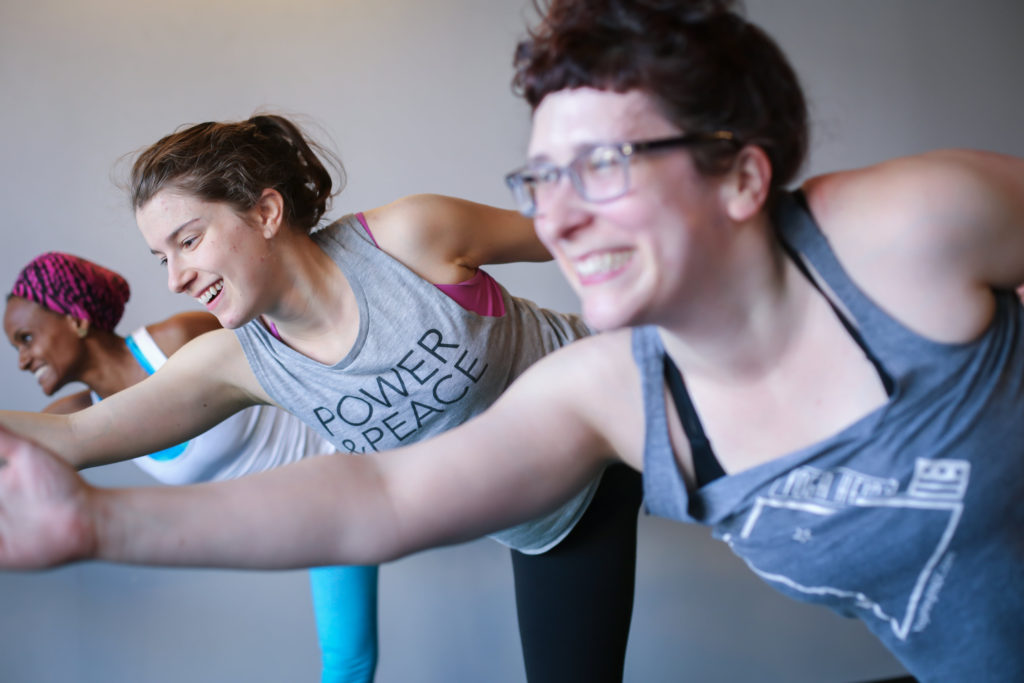
To ensure that their classes work with all budgets, Yoga Heights offers half price “happy hour” classes five days per week, work-study in trade for classes, as well as “Karma Passes” which allows students to pay just $8 per class up to four times per month.Through these programs, Yoga Heights has helped more than 4,000 people afford yoga classes in the three years they have been open.
“We look forward to continuing to be an affordable and community oriented yoga studio for people who are brand new to yoga, as well as regularly practicing yogis,” Pierno continued.
More information on class offerings, pricing and events is available at www.YogaHeightsDC.com.
Studio owners Jess Pierno and Amy Rizzotto, and their talented team of instructors remain steadfastly committed to working with Yoga Heights’ students to ensure that health and wellness are accessible to all.
Yoga Heights is currently offering pre-opening sales on unlimited memberships through its website at www.YogaHeightsDC.com. Visit www.YogaHeightsDC.com to sign up and save today!
For questions or comments please contact:
Amy Rizzotto, Yoga Heights
write: [email protected]
DIY Bootcamp – Choose your own adventure!
Do you remember those good ol’ “choose your own adventure” books? They were so much fun! What happens when a bootcamp coach recalls such happy childhood memories (said no one ever…)? Well, yours truly turns bootcamp planning into adventure mapping, only instead of journeying under the sea or creating your very own robot my bootcampers got to choose whether to do burpees or tuck jumps, push-ups or V-Ups, and so on and so forth. What fun!
I know what you’re thinking…I want to choose my own bootcamp adventure!!!! Well, ask and ye shall receive. Below is your very own roadmap.
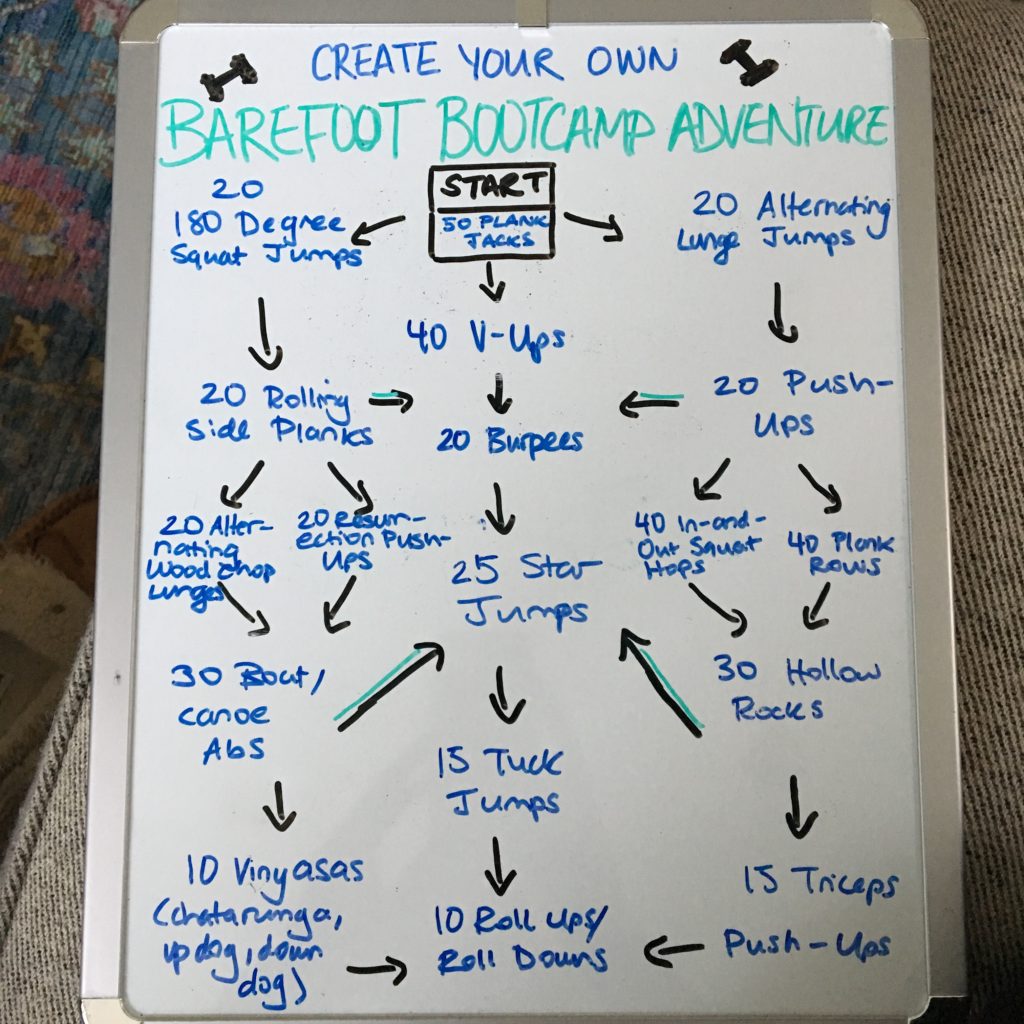
Try it out from start (50 Plank Jacks) to finish (10 Roll Ups/Roll Downs – a Pilates move) three times, picking a different path each time. It should take you around 30 minutes and kick your butt! Grab a buddy to hold one another accountable and make it a little more fun.
Rock your next Half Marathon with this Modified Training Program
I just made it through week 1 of my 12-week half marathon training program and enjoyed a lovely run through Rock Creek Park in balmy 55-degree December weather. In the past I’ve gotten repeatedly injured in the lead up to running events, so I’m committed to being smart and diligent about training this time around.
What you see below is adapted from the well-known Hal Higdon Intermediate Half Marathon Training Guide. I’m a yogi thus there is a lot more stretching, foam rolling, and “self-care”-esque elements to my plan of attack. My goal: run fast, remain injury-free. There is no worse feeling than training really hard for something only to blow out a knee or tear a hamstring a couple weeks prior to race day.

This plan is intended to keep your muscles and mind healthy and happy for 12 weeks straight. Feel free to shift your week’s workouts around to accommodate your busy schedule. Make it doable otherwise you’ll start to resent and cop out on it.
MOARfit 20-Minute Total Body Workout & HIIT It and Quit It Playlist
Step 1: bump this Spotify playlist (and follow me for all my music)
We’re going old school with this playlist. Who doesn’t like Missy Elliot, Mase, Eve and more! I know music is a main motivator for me when I workout. What are your go-t0 sweat session jams?
Step 2: press play, no sound needed
(Please ignore my video editing 🙂 I’m still learning how to use text overlay!)
Step 3: post a picture or video of yourself doing one of these #MOARfitmoves on Instagram and tag me (@MOARfit) so I can check you out and give you some pro coaching tips!
Your New Healthy Routine + a 7-Day Game Plan to Take Action Today!
Whether you’re looking to jumpstart a healthier lifestyle, change up a stale fitness routine, or introduce new elements into an already beloved wellness program, this post is for you.
Let’s face it, we all have aspects of living healthy and being fit that we love and those that we loathe. For some, stretching is at best an afterthought while others could hang out in forward folds and spinal twists all dang day. The same holds true for every other component of a well-rounded healthy lifestyle—strength training, meditation, active recovery, cardio, and the list goes on.
While it’s natural to pick favorites, it’s important that we all strive to balance our regimens for mind-body optimization and longevity. If you find it hard to stay motivated or juggle all these elements, try out my 7-Day Game Plan for a Healthy New Routine.
7-Day Game Plan for a Healthy New Routine
DAY 1: Strength Training
Pick 5 body weight exercises to build your functional fitness. Include one plyometric move to get your heart rate up. Do each exercise for 45 seconds followed by 15 seconds of rest 4 times. (20-25 minutes)
Example:
- Mountain Climbers
- Squats
- Alternating Lunges
- Walk-Out Planks
- Push Ups
DAY 2: Stretch
Take a Pilates or Yoga Class at your favorite gym, or try some place new. Make sure you let the teacher know beforehand if you’re brand new to the practice or if you have any medical conditions or injuries they should be aware of. Aim for a class that’s at least 45 minutes but no more than 75 (unless it’s a very gentle yoga class). (45-75 minutes)
DAY 3: Active Recovery
Go for an easy walk or leisurely bike ride—and always wear your helmet!
The Washingtonian recently ran a piece of 20 of the best walks to do around Washington, DC. Check out their list for motivation, or drop into Rock Creek Park for a little breathe of fresh air amidst our urban metropolis. (60 minutes)
DAY 4: Intervals
Warm Up for 5 minutes with dynamic stretching or a light jog.
Do 10-15 30-second intense cardio intervals (ex. burpees, speed cycle, stairs, sprints, row) with 2 minutes lower intensity work in between. (30-45 minutes)
DAY 5: Stretch
Take a Pilates or Yoga Class at your favorite gym, or try some place new. Make sure you let the teacher know beforehand if you’re brand new to the practice or if you have any medical conditions or injuries they should be aware of. Aim for a class that’s at least 45 minutes but no more than 75 (unless it’s a very gentle yoga class). (45-75 minutes)
DAY 6: Endurance
Pick a cardio activity you love (hiking, running, biking, rowing, swimming) and do it at a moderate intensity level – i.e. you could hold a conversation but it’d be tough – for at least one hour and up to two. (60-120 minutes)
DAY 7: Active Recovery
Go for an easy walk or leisurely bike ride—and always wear your helmet!
The Washingtonian recently ran a piece of 20 of the best walks to do around Washington, DC. Check out their list for motivation, or drop into Rock Creek Park for a little breathe of fresh air amidst our urban metropolis. (60 minutes)
Start with one week. If you miss a day, don’t sweat it and don’t try and play catch up all in one day. Hit the reset button with Day 1 the next week and try it again. Consistency is key. If you start to get down on yourself for a day when you don’t find a way to fit a workout in you’ll inevitably fail. Give yourself some grace, stay positive, and keep on keepin’ on for the most enduring lifestyle results.
Recent Events: Fueling Amazing with Athleta and Nutrition for Athletes with Off Road Cycling
The first official weekend of summer was jam-packed with fun. Not only was I at the studio (Yoga Heights) more than usual with my business partner getting some well-deserved R&R, but I had one MOARfit event each day to make it extra special.
First up – Fueling Amazing with Athleta Georgetown:
I had such an awesome group of yogis Saturday, June 21 for the Athleta Summer Solstice celebration down on The Labyrinth at Georgetown Waterfront Park.
More than 25 people braved the temperamental weather and didn’t let a few rain drops during our sun salutations dampen the fun. 
A great big THANK YOU to everyone that came out for the event and to Athleta for including me as their teacher for this powerful group!

Stay in the know on future FREE Athleta Georgetown events by following them on Twitter @Athleta_DC. And while you’re at it, follow me @MOARfit! #fuelingamazing
To cap off the weekend – Nutrition for Athletes at Off Road:
A fit-fabulous group of 15 runners (and some cyclists) came out to Off Road Indoor Cycling Sunday, June 22 for my Nutrition for Athletes Workshop. We covered pre-, during and post-race nutrition, all the while sampling delicious granola from my girl Alicia at Greenheart Wellness and smoothies concocted by yours truly.
Keep checking the blog for a little fit-focused nutrition knowledge coming your way in July!
Why Protein Isn’t a Dietary Silver Bullet
Why Protein Isn’t a Dietary Silver Bullet.
Originally published by STACK.com | August 15, 2013
Check out my STACK Expert profile for more articles on fitness and nutrition. //
Our collective desire for quick fixes makes diet crazes appealing. But although the names may change—Atkins, Zone and, most recently, Paleo—all fad diets tend to have one thing in common: an emphasis on increasing protein intake.
For years, fad diets have demonized healthy fats and carbs, claiming that if you eat too much of these macronutrients, you will get fat. Yet, protein has remained largely unscathed by the mainstream media.
This also holds true for athletes. Lean protein—and lots of it—is considered essential for athletic recovery. Muscle-repairing fats and energy-replenishing carbohydrates are given short shrift.
If you are one who focuses your nutrition on protein, it’s time to listen up.
Protein is an essential part of our daily diet. It constitutes the structural basis of our muscles, skin, nails and hair. There’s no doubt that it’s essential to our well-being. However, it’s not the only important nutrient.
Pick up your favorite fitness magazine, and you will see why our nutrition mindset is biased toward protein. Pages and pages of ads celebrate the latest protein powder or bar, but do you see any ads for products containing carbs or healthy fats? You’d think Americans were suffering from a serious epidemic of protein deficiency.
Fortunately, that is not the case. In fact, most of us—including vegetarians and vegans— get more than enough protein through our regular daily food intake.
For the average person, it’s recommended to consume 0.8 to 1.0 grams of protein per kilogram (pounds / 2.2) of body weight. If you’re an athlete or someone performing high-intensity physical activity (e.g., training for a triathlon or marathon), you should increase your daily protein intake to 1.1 to 1.4 grams per kilogram of body weight.
In other words, an active 135-pound woman should eat around 75 grams of protein per day, and an active 180-pound man should have 140 grams. Anything beyond the amount your body can use will be excreted through urine, so ultimately any excess protein is wasted. And, consuming too much protein may stress your liver and kidneys when converting it to carbs or fat for energy.
So despite its celebrated status, too much protein simply won’t do you any good. Remember also that protein isn’t a miracle food that you can chow down on without the risk of gaining weight. It has just as many calories per gram as carbs.
So, what should you focus on in your diet?
Ideally your daily caloric intake should include 25 to 35 percent fat, 15 to 20 percent protein and 55 to 60 percent carbs. In contrast, the Zone diet calls for a 30:40:30 ratio. That’s double the amount of protein and not nearly enough carbs to fuel your body for quality workouts.
Bottom line: although protein is an important component of a healthy diet, you need to break the mindset that protein is the silver bullet of nutrition. Accept that healthy fats and carbs have a place in your diet, and you will be more likely to reach your fitness and health goals.
MOAR’s Daily Dozen: DAY 12 – Reclining Shoelace
Step-by-Step:
- Lay flat on your back, legs long with head resting heavy on the mat.
- Draw your knees in toward your chest, bent, and cross your right leg over left. Reach for your ankles or feet with each hand (right hand grabs left foot, left hand grabs right foot). Gently pull the feet toward your hips as you lower the legs – still stacked in this pretzel-like set up – to the mat.
- Holding the left foot with your right hand just outside the right hip, rotate your pelvis toward the left side, coming to rest on the left hip. Your left hand is still gripping the right foot as you twist. Keep your shoulders glued to the mat and turn your head to the right.
- Stay here, or deepen the pose by extending the right leg. Kicking your right foot into the left hand and working to straighten out that right knee will bring an intense IT band stretch into this contralateral twist.
- Hold for 10 deep breaths, then slowly come back to center and hug your knees into your chest. Plant your feet on the mat, hips width apart. Windshield wiper the knees from side to side.
- Repeat steps 1 through 5, this time crossing left leg over right, twisting to the right as you look to the left.
How It Will Heal You:
Hip Pain – The best way to prevent and treat hip pain is to increase your ROM (range of motion) in all directions. If you play a sport like soccer, which involves a lot of explosive movement and running, you are particularly susceptible to hip pain. As you work into this hip-helping posture, chances are high that you’ll notice that one hip will be tighter than the other. To bring balance to the body, be sure to hold postures for 10 extra deep breaths on the side that’s talking to you. Use your breath to calm your nervous system and let the body open.
Hamstring Pulls – The vast majority of the time, hamstring pulls are a direct result of inflexible hamstrings. This big muscle group requires patience and daily attention to open up and can be really frustrating in their resistance to change. You are not going to go from barely touching your toes to Jordyn Wieber overnight. Commit to working on this posture every day and slowly but surely you’ll get the results you want and your body needs.
Knee Injuries – We all know someone that has torn their meniscus, had a knee replacement, or had some sort of debilitating knee injury. Our knees take a serious beating from all of the physical stuff we do day in and day out—not to mention the high heels some of us ladies rock to look lovely but brutalize our bodies from the tippy toes on up. The best way to prevent pain and avoid trouble is to keep the hips, IT band and hamstrings strong and flexible. Hips, IT band and hamstring mobility keeps the work in your bigger muscle groups (hamstrings and quadriceps) rather than the body’s default of looking to the place of least resistance–which is almost always the knee joint–for speed, power and agility. If you give the body freedom to move using your large muscle groups and stabilizers it will learn not to rely upon vulnerable and complex joints.
Lower Back Pain – How many of you have experienced lower back pain? I’d venture to say that anyone who sits in a chair all day has suffered through their fair share. This is also a big one for athletes. Why is that? Most often, lower back pain in athletes stems from tight hamstrings. For my fellow anatomy nerds out there, the hamstrings originate on the sitz bone–aka those little nobs deep in the flesh of your booty that us yogis balance on when doing boat core work (my favorite!). , If your hamstrings are tight they will pull down on the pelvis from the insertion point (the sitz bone) tilting it out of proper alignment and forcing your body to compensate using your lower back to remain upright. Another common reason for low back pain is underdeveloped abdominal muscles. I’m not talking just the six-pack abs (rectus abdominis) but also the deeper corset abs (transverse abdominis) that are critical for balance and stability. The simply solution to preventing and treating lower back pain is to stretch out your hammies and workout your core every day.
Foot and Ankle Issues – I can’t tell you have many times I wrenched my ankle playing soccer and field hockey as a kid, or more recently while hiking and running. Ankle sprains, Achilles tendonitis and plantar fasciitis are three very common foot and ankle injuries. These injuries are no fun because let’s face it, when our foundation is out of whack everything else is thrown off and dysfunctional. The answer to avoiding these frustrating beasts of burden is to strengthen the ankle, increase the flexibility of the ankle and toes and work on your balance. Not only does this require concerted effort to increase the openness in these areas but it also means more core work. Core is your key to stability, meaning you’ll be less likely to get thrown off balance and tweak something if your abdominal and back muscles are strong.
MOAR’s Daily Dozen: DAY 11 – Reclining Thread the Needle
Step-by-Step:
- Lay flat on your back, legs long. Head is heavy, face is relaxed.
- Plant your left foot flat on the mat, knee bent. Make sure you can just barely reach your left heel with your left fingertips.
- Bend your right leg, placing right ankle on top of left knee. Flex the right foot.
- Reach your right hand through your legs and your left hand around the outside of the left leg. Interlace your fingers behind the left thigh and pull the left leg in toward your torso, flexing the left foot strongly as it lifts off the mat. Press your right elbow into your right thigh to open up the hip and take this deeper into the psoas and IT band.
- If you want to deepen the stretch, reach your hands to the front of the left shin (left calf and hamstrings muscles squeeze together) and interlace your hands.
- Take 10 deep breaths, using your arm strength to pull the left leg closer and press the right leg further out with each inhale and exhale.
- Return to laying flat on your back, legs long.
- Repeat steps 1 through 7, this time bending the right leg first and taking the left leg across.
How It Will Heal You:
Knee Injuries – We all know someone that has torn their meniscus, had a knee replacement, or had some sort of debilitating knee injury. Our knees take a serious beating from all of the physical stuff we do day in and day out—not to mention the high heels some of us ladies rock to look lovely but brutalize our bodies from the tippy toes on up. The best way to prevent pain and avoid trouble is to keep the hips, IT band and hamstrings strong and flexible. Hips, IT band and hamstring mobility keeps the work in your bigger muscle groups (hamstrings and quadriceps) rather than the body’s default of looking to the place of least resistance–which is almost always the knee joint–for speed, power and agility. If you give the body freedom to move using your large muscle groups and stabilizers it will learn not to rely upon vulnerable and complex joints.
Hip Pain – The best way to prevent and treat hip pain is to increase your ROM (range of motion) in all directions. If you play a sport like soccer, which involves a lot of explosive movement and running, you are particularly susceptible to hip pain. As you work into this hip-helping posture, chances are high that you’ll notice that one hip will be tighter than the other. To bring balance to the body, be sure to hold postures for 10 extra deep breaths on the side that’s talking to you. Use your breath to calm your nervous system and let the body open.


